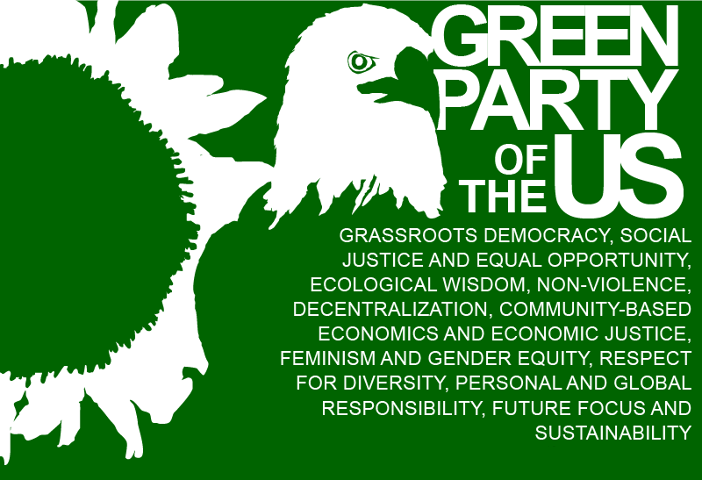
The party, which is the country's fourth-largest by membership, promotes environmentalism, nonviolence, social justice, participatory grassroots democracy, gender equality, LGBT rights, anti-war and anti-racism. On the political spectrum the party is generally seen as left-wing, and in 2016 officially self-described as an anti-capitalist party
The GPUS was founded in 2001 as the evolution of the Association of State Green Parties (ASGP), which was formed in 1996. After its founding, the GPUS soon became the primary national green organization in the country, eclipsing the Greens/Green Party USA (G/GPUSA), which formed in 1991 out of the Green Committees of Correspondence (CoC), a collection of local green groups active since 1984. The ASGP had increasingly distanced itself from the G/GPUSA in the late 1990s.
The Greens gained widespread public attention during the 2000 presidential election, when the ticket composed of Ralph Nader and Winona LaDuke won 2.7% of the popular vote. Nader was vilified by many Democrats and even some Greens, who accused him of spoiling the election for Al Gore, the Democratic candidate.The degree of Nader's impact on the 2000 election remains controversial.
The GPUS had several members elected in state legislatures, including in California, Maine and Arkansas. A number of Greens around the United States hold positions on the municipal level, including on school boards, city councils and as mayors.
The political movement that began in 1985 as the decentralized Committees of Correspondence evolved into a more centralized structure by 1990, opening a national clearinghouse, and forming governing bodies, bylaws, and a platform as the Green Committees of Correspondence (GCoC), and by 1990, simply, The Greens. The organization conducted grassroots organizing efforts, educational activities, and electoral campaigns.
Internal divisions arose between members who saw electoral politics as ultimately corrupting and supported the notion of an "anti-party party" formed by Petra Kelly and other leaders of Die Grünen in Germany, vs. those who saw electoral strategies as a crucial engine of social change. A struggle for the direction of the organization culminated a "compromise agreement," ratified in 1990 at the Greens National Congress in Elkins, West Virginia – in which both strategies would be accommodated within the same 527 political organization renamed the Greens/Green Party USA (G/GPUSA). The G/GPUSA was recognized by the FEC as a national political party in 1991.
The compromise agreement subsequently collapsed and two Green party organizations have co-existed in the United States since. The Green Politics Network was organized in 1990 and The National Association of Statewide Green Parties formed by 1994. Divisions between those pressing to break onto the national political stage and those aiming to grow roots at the local level continued to widen during the 1990s. The Association of State Green Parties (ASGP) encouraged and backed Nader's presidential runs in 1996 and 2000. By 2001, the push to separate electoral activity from the G/GPUSA issue-based organizing led to the Boston Proposal and subsequent rise of the Green Party of the United States. The
No comments:
Post a Comment